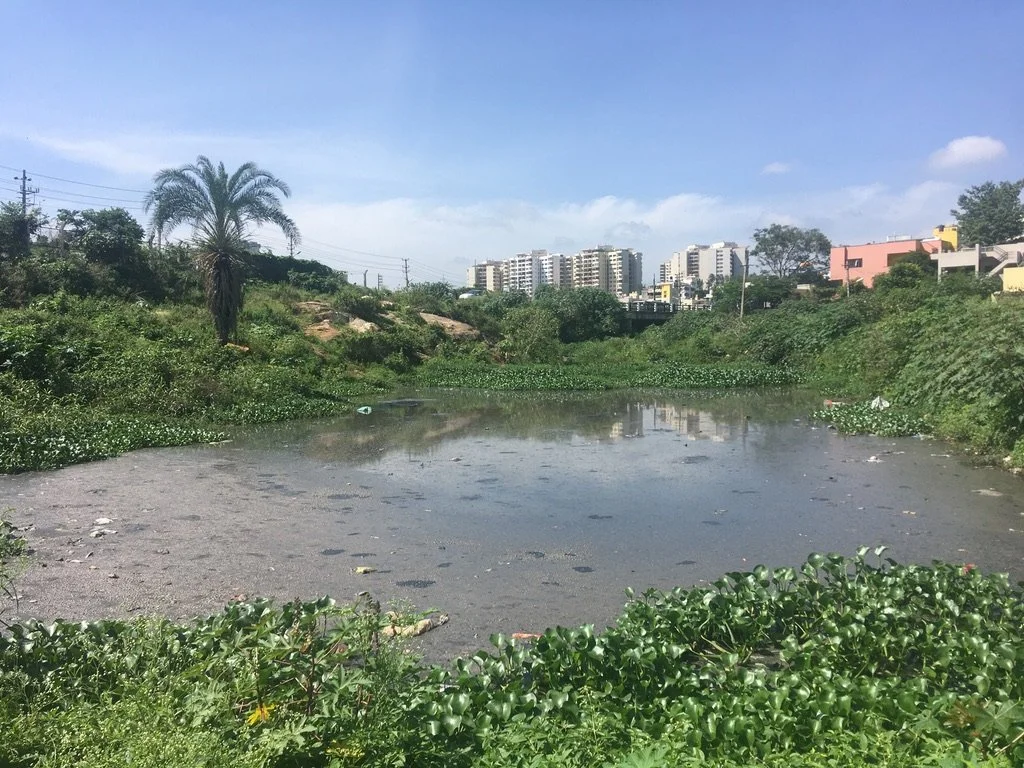Subramanyapura Kere
Subramanyapura, Bangalore, Karnataka
(July 2020)
Size: 18.6 acres, Waterspread - 8 acres
Elevation(m): 870
Annual Rainfall(mm): 1000
Climate: Tropical Wet & Dry / Tropical Savanna
Function: Public Lake
Key features: Wetlands-Fodder Parks-Gazebo-Community Garden-Shore Planting-Rajakaluve Planting
Since 2005, the Environment Support Group (ESG) has been working to save Subramanya Kere from numerous encroachments, pollution, and threats of total removal in the name of urban development. This long effort has, most recently, prevented the lake from being transformed into a bus terminal.
The work is not over, however, as encroachments remain and the water body is still in a dire state.
In June 2020 Ananas worked with ESG to design and plan the rejuvenation of Subramanya Kere. The resulting ‘way forward’ document proposed a holistic redesign of the lake that is ecologically sensitive and prioritises the welfare of the local community.
A lake rejuvenation is not just desilting and adding urban-centric elements cloaked under the garb of inclusivity, but a complex socio-ecological process which should involve everyone in the village and the local community as part of it.
In the scenario illustrated below, the encroachments that have been there since the ‘90s in the west remain. The rehabilitation work of the lake includes waste and waste water management, rainwater harvesting and an improvement in the living conditions and ecological integration of the local community.
Surveys are done to understand what kind of skills the people living in the encroachments have and how best the lake project can accommodate these.
This is the primary community for the care and upkeep of the lake, and it is they who benefit from it the most as long as it is looked after. The benefit of the community’s placement is that they can see immediately if the lake is being threatened by dumping, sewage, encroachments and so on.
The fruit trees in the community will join a larger food forest which stretches across its boundary with the lake. A nursery and seed back will be maintained to provide seeds and saplings for the food forests and other gardens, and will act as a source of income for the gardeners there.
This kind of socially and ecologically integrated design can become a model for other lakes across Bangalore.










